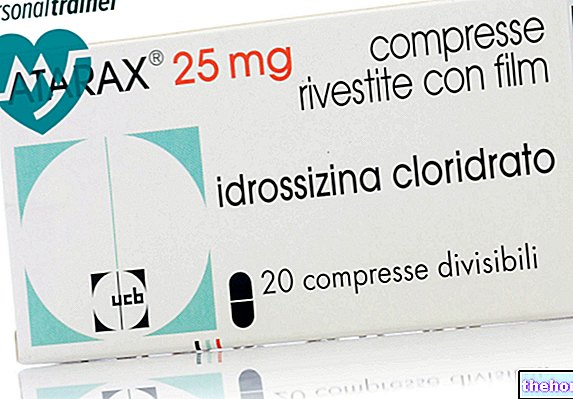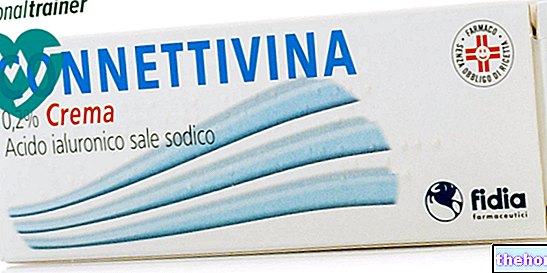Active ingredients: Pirantel Pamoato
Combantrin 250 mg chewable tablets
Combantrin 250 mg / 5 ml oral suspension
Indications Why is Combantrin used? What is it for?
Combantrin contains the active substance pyrantel (as pyrantel pamoate). Pyrantel pamoate belongs to a group of medicines called anthelmintics and antinematodes which are used to kill different types of worms or helminths found in the intestine, facilitating their elimination.
Combantrin is indicated for the treatment of infestations with parasites known as pinworms (Enterobius vermicularis) and roundworms (Ascaris lumbricoides).
Contraindications When Combantrin should not be used
Do not take Combantrin
- if you are allergic to pyrantel pamoate or any of the other ingredients of this medicine
Precautions for use What you need to know before taking Combantrin
Talk to your doctor or pharmacist before taking Combantrin if:
- you have severe liver problems, as you have had changes in the results of some blood tests that indicate liver function (SGOT).
- a member of your family or a community of people with whom you are in contact has developed a "parasite infestation. In these cases, your doctor will advise you to start preventive treatment with Combantrin and to comply with the strictest hygiene rules.
This medicine does not color the mucous membrane of the mouth and does not change the color of the stool.
Children
Combantrin is not recommended in children under 1 year of age due to a lack of data on the safety of this medicine.
Interactions Which drugs or foods may change the effect of Combantrin
Tell your doctor or pharmacist if you are taking, have recently taken or might take any other medicines.
Tell your doctor if you are taking piperazine, another medicine used to treat parasite infestations, as the effectiveness of Combantrin may decrease or be canceled.
Warnings It is important to know that:
Pregnancy and breastfeeding
If you are pregnant or breast-feeding, think you may be pregnant or are planning to have a baby, ask your doctor or pharmacist for advice before taking this medicine.
Pregnancy
If you are or suspect that you are pregnant, take this medicine only when clearly needed and under the direct supervision of your doctor.
Feeding time
If you are breast-feeding, please ask your doctor who will decide whether to discontinue breast-feeding or treatment with Combantrin.
Driving and using machines
There are no known effects of this medicine on the ability to drive or use machines. If you get a side effect that could affect these abilities, avoid driving or using machines.
Combantrin 250 mg chewable tablets contain sorbitol and fructose
This medicine contains sorbitol and fructose, two types of sugars. If you have been told by your doctor that you have an intolerance to some sugars, contact your doctor before taking this medicinal product. Also, the fructose contained in this medicine can be harmful to the teeth.
Combantrin 250 mg / 5 ml oral suspension contains sorbitol
This medicine contains sorbitol, a type of sugar. If you have been told by your doctor that you have an intolerance to some sugars, contact your doctor before taking this medicinal product.
Dose, Method and Time of Administration How to use Combantrin: Posology
Always take this medicine exactly as your doctor or pharmacist has told you. If in doubt, consult your doctor or pharmacist.
Combantrin is to be taken by mouth, in a single administration per day.
The tablets must be chewed and must not be swallowed whole.
The oral suspension must be shaken well before use.
You can take this medicine with or without meals.
Before and during therapy it is not necessary to use a purgative to facilitate the elimination of faeces.
Your doctor will tell you the total dose of medicine to take based on your body weight, considering that the recommended dose is 10 mg per kg of body weight.
Combantrin 250 mg chewable tablets
- 12 to 22 kg: half-1 tablet per day;
- 22 to 41 kg: 1-2 tablets per day;
- 41 to 75 kg: 2-3 tablets per day;
- up to 85 kg: 3 tablets per day;
- over 85 kg: 4 tablets per day.
Combantrin 50 mg / ml oral suspension
- weight less than 12 kg: half a teaspoon per day;
- 12 to 22 kg: half to 1 teaspoon per day;
- from 22 to 41 kg: 1-2 teaspoons per day;
- 41 to 75 kg: 2-3 teaspoons per day.
Overdose What to do if you have taken an overdose of Combantrin
If you take more Combantrin than you should
If you think you have taken more Combantrin than you need, please inform or go to the nearest hospital immediately.
If you forget to take Combantrin
Do not take a double dose to make up for a forgotten dose. Just take the next dose at the usual time.
If you have any further questions on the use of this medicine, ask your doctor or pharmacist.
Side Effects What are the side effects of Combantrin
Like all medicines, this medicine can cause side effects, although not everybody gets them.
The most frequently observed side effects are related to the gastrointestinal system.
Contact your doctor if you experience the following side effects:
- nausea, vomiting, stomach pain, abdominal cramps, diarrhea, constant and often painful urge to urinate or defecate;
- changes in the results of some blood tests for liver function (elevation of the SGOT);
- loss of appetite;
- headache, dizziness, drowsiness;
- inability to sleep;
- cold sweats, sweat, itching, skin irritation, hives
Reporting of side effects
If you get any side effects, talk to your doctor or pharmacist. This includes any possible side effects not listed in this leaflet. You can also report side effects directly via the national reporting system at https://www.aifa.gov.it/content/segnalazioni-reazioni-avversei
By reporting side effects you can help provide more information on the safety of this medicine.
Expiry and Retention
Keep this medicine out of the sight and reach of children.
This medicine does not require any special storage conditions.
Do not use this medicine after the expiry date which is stated on the carton, blister or bottle after "EXP". The expiry date refers to the last day of that month.
Do not throw any medicines via wastewater or household waste. Ask your pharmacist how to throw away medicines you no longer use. This will help protect the environment.
What Combantrin contains
The active ingredient is pyrantel (like pyrantel pamoate).
Combantrin 250 mg chewable tablets
Each chewable tablet contains 720 mg of pyrantel pamoate (equivalent to 250 mg of pyrantel base). The other ingredients are: ethylcellulose, povidone, sorbitol (E420), D-fructose (see section "Combantrin 250 mg chewable tablets contains sorbitol and fructose"), lemon essence powder, sweet orange essence powder, tartaric acid, magnesium stearate.
Combantrin 250mg / 5ml oral suspension
100 ml of oral suspension contains 14,400 mg of pyrantel pamoate (equivalent to 5,000 mg of pyrantel base). The other ingredients are: silicone emulsion, citric acid, povidone, lecithin, sodium benzoate (E211), sorbitol solution (see section "Combantrin 250 mg / 5 ml oral suspension contains sorbitol"), glycerin, magnesium aluminum silicate, polysorbate 80, currant flavor, caramel cream flavor, purified water.
What Combantrin looks like and contents of the pack
Combantrin 250 mg chewable tablets
Carton containing 8 chewable tablets.
Combantrin 250mg / 5ml oral suspension 30ml glass bottle.
Source Package Leaflet: AIFA (Italian Medicines Agency). Content published in January 2016. The information present may not be up-to-date.
To have access to the most up-to-date version, it is advisable to access the AIFA (Italian Medicines Agency) website. Disclaimer and useful information.
01.0 NAME OF THE MEDICINAL PRODUCT
COMBANTRIN
02.0 QUALITATIVE AND QUANTITATIVE COMPOSITION
COMBANTRIN 250 mg tablets
Each chewable tablet contains:
Active principle
Pirantel Pamoate 720.00 mg
equal to Pirantel base 250 mg
COMBANTRIN 250 mg / 5 ml oral suspension
Each 100 ml of oral suspension contains:
Active principle
Pirantel Pamoate 14,400 mg
equal to Pirantel base 5,000 mg
For the full list of excipients, see section 6.1.
03.0 PHARMACEUTICAL FORM
Tablets.
Oral suspension.
04.0 CLINICAL INFORMATION
04.1 Therapeutic indications
COMBANTRIN (pyrantel pamoate) is specifically indicated for the therapy of pinworm infestation (Enterobius vermicularis) and roundworms (Ascaris lumbricoides).
04.2 Posology and method of administration
COMBANTRIN (pyrantel pamoate) should be administered orally in a single dose on the basis of 10 mg / kg of weight.
* The use of COMBANTRIN (pyrantel pamoate) is not recommended in children younger than 1 year, in the absence of data on the safety of use in this age group.
In adults, the dosage will be 3 tablets up to a weight of 85 kg and 4 tablets over this weight.
COMBANTRIN (pyrantel pamoate) can be administered regardless of the relationship with meals.
It is not necessary to use a purgative before or during therapy.
04.3 Contraindications
COMBANTRIN (pyrantel pamoate) is contraindicated in subjects with known hypersensitivity to the active substance or to any of the excipients.
04.4 Special warnings and appropriate precautions for use
The finding of a parasitic infestation in one member of a family or community may lead to suspicion of a similar but latent infestation in the other members.
In these cases it is recommended to administer COMBANTRIN (pyrantel pamoate) to all members of the group and to follow the strictest hygiene rules.
For the detection of mild and transient elevations of the SGOT, which occurred in a small percentage of patients, the drug should be used with caution in cases of severe hepatic insufficiency.
The drug does not stain the oral mucosa, nor the feces.
The drug contains fructose and sorbitol is therefore not suitable for people with hereditary fructose intolerance.
04.5 Interactions with other medicinal products and other forms of interaction
Piperazine
In the case of concomitant use of pyrantel and piperazine, the anthelmintic effects of pyrantel and piperazine can be neutralized.
04.6 Pregnancy and lactation
Pregnancy
Although reproductive studies have not shown any teratogenic effects, COMBANTRIN (pyrantel pamoate) has not been studied in pregnant women. Consequently, pyrantel pamoate should only be administered during pregnancy if the potential benefits justify the potential risk to the patient or fetus.
Feeding time
It is not known whether pyrantel pamoate is excreted in human milk. Breastfeeding should therefore be discontinued if use of the drug is deemed essential.
04.7 Effects on ability to drive and use machines
The effect of COMBANTRIN (pyrantel pamoate) on the ability to drive and use machines has not been studied. There are no cases demonstrating an effect of pyrantel pamoate on these abilities.
04.8 Undesirable effects
The most frequently observed side effects are related to the gastrointestinal tract.
Gastrointestinal system: nausea, vomiting, gastralgia, abdominal cramps, diarrhea, tenesmus.
Hepatobiliary system: transitory elevations of the SGOT.
Metabolism and nutrition: anorexia.
Nervous system: headache, dizziness, drowsiness.
Psychiatric symptoms: insomnia.
Skin and subcutaneous tissues: cold sweats, sweat, rash, itching, hives.
04.9 Overdose
Signs and symptoms
No toxic effects attributable to pyrantel pamoate overdose have been found.
Treatment
There is no specific antidote for the treatment of pyrantel pamoate overdose. Treatment consists of the usual symptomatic and supportive measures.
05.0 PHARMACOLOGICAL PROPERTIES
05.1 Pharmacodynamic properties
ATC code: P02CC01.
Pyrantel pamoate has shown a high anthelmintic efficacy against infections caused by Enterobius vermicularis (pinworm) eAscaris lumbricoides (ascaris).
Pyrantel pamoate exerts a neuromuscular blocking effect on sensitive helminths. Thanks to this activity, pyrantel pamoate immobilizes roundworms and causes their expulsion without stimulating the rate of spread of parasites. In the intestinal tract, pyrantel pamoate is effective on both mature and immature forms of sensitive helminths, while the migrant forms are not affected.
05.2 Pharmacokinetic properties
Pyrantel pamoate is poorly absorbed from the gastrointestinal tract. After a single oral administration of 11 mg / kg, plasma levels of unchanged drug lower than 0.05-0.13 mg / ml are obtained. The absorbed portion is rapidly metabolised and only 1% of the administered dose is excreted unchanged in the urine and 3% in the form of metabolites.
05.3 Preclinical safety data
The LD50 after single oral administration in cats, mice and dogs varies from 2 to 5 g / kg while after single intramuscular administration it is 250 mg / kg in cats and 198 mg / kg in mice.
Chronic toxicity
In one study, 60 rats were treated with doses of 100, 300 or 600 mg / kg / day, respectively, over a period of 13 weeks. No changes referable to pyrantel pamoate emerged from the anatomo-pathological investigation or to the microscopic examination of the tissues.
In another study, beagle dogs were treated with doses of 100, 300, or 600 mg / kg / day over a period of 13 weeks. At the end of the study period, mild and apparently dose-dependent lymphocytosis and an increase in serum transaminases were detected in 5 dogs.
There were no histopathological changes referable to the drug.
Teratogenesis
There were no effects on fertility, reproduction, organogenesis, parturition or lactation in rats treated with doses of 25 or 250 mg / kg. Furthermore, no effects on organogenesis were found in rabbits treated with the same doses.
06.0 PHARMACEUTICAL INFORMATION
06.1 Excipients
Combantrin 250 mg tablets: ethylcellulose, povidone, sorbitol E420, d-fructose, lemon essence powder, sweet orange essence powder, tartaric acid, magnesium stearate.
Combantrin 250mg / 5ml oral suspension: silicone emulsion, citric acid, povidone, lecithin, sodium benzoate E211, sorbitol solution, glycerin, aluminum and magnesium silicate, polysorbate 80, currant flavor, caramel cream flavor, purified water.
06.2 Incompatibility
Not relevant.
06.3 Period of validity
With intact packaging:
COMBANTRIN 250 mg tablets: 4 years.
COMBANTRIN 250 mg / 5 ml oral suspension: 3 years.
06.4 Special precautions for storage
This medicinal product does not require any special storage conditions.
06.5 Nature of the immediate packaging and contents of the package
COMBANTRIN 250 mg tablets: blister-pack, carton containing 8 chewable tablets.
COMBANTRIN 250 mg / 5 ml oral suspension: glass bottle of 30 ml.
06.6 Instructions for use and handling
Unused medicine and waste derived from this medicine must be disposed of in accordance with local regulations.
07.0 MARKETING AUTHORIZATION HOLDER
Pfizer Italia S.r.l.
Via Isonzo, 71 - 04100 Latina
08.0 MARKETING AUTHORIZATION NUMBER
COMBANTRIN 250 mg tablets: AIC n. 023003027
COMBANTRIN 250 mg / 5 ml oral suspension: AIC n. 023003041
09.0 DATE OF FIRST AUTHORIZATION OR RENEWAL OF THE AUTHORIZATION
31 December 1973/31 May 2005
10.0 DATE OF REVISION OF THE TEXT
January 2009




























